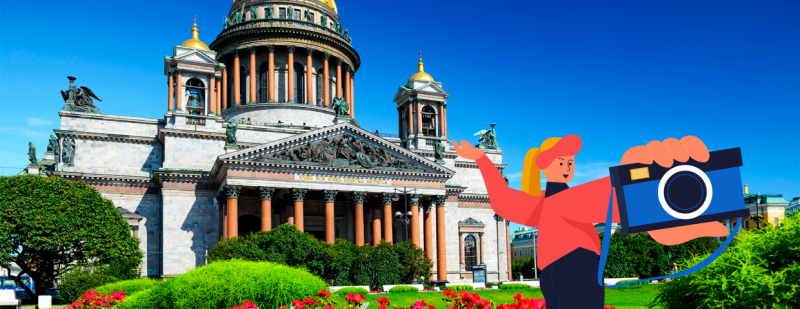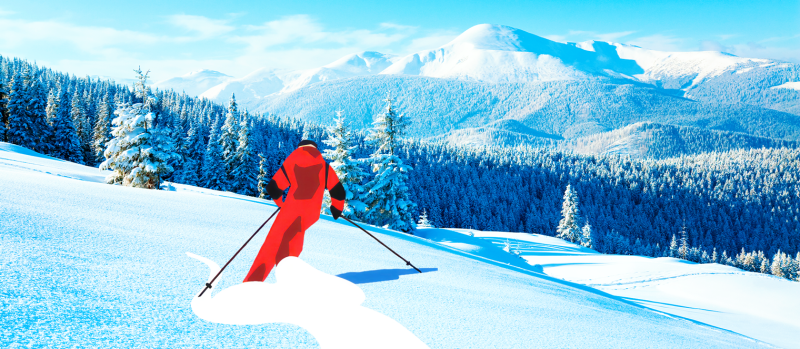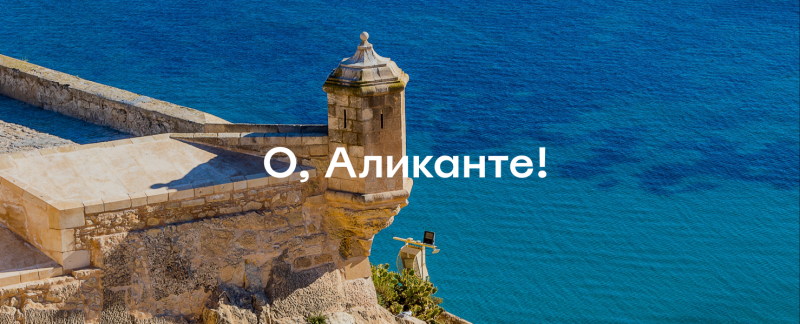
If Moscow never sleeps, then Alicante never gets bored. There is almost no rain here, it is always green, and holidays and festivals take place every month. We tell you where to relax and what to do in the port city on the Costa Blanca.
Content
- About the resort
- How to get there
- Where to stay
- Beaches
- Attractions
- Festivals
- Food
- Shopping
About the resort
Why go
- Relax on the cleanest beaches from the world Blue Flag list;
- get to a miniature island 22 km from the city;
- have dinner in restaurants with Michelin stars;
- get to the fire festival or medieval festivals that will take you back centuries.
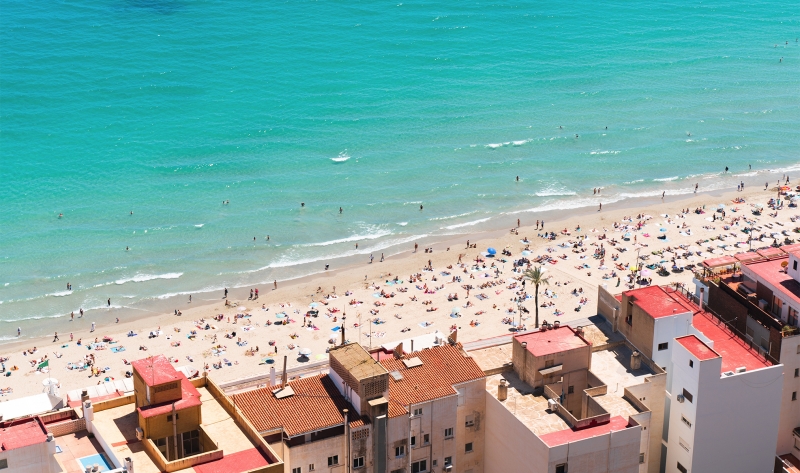
Here you can relax on the cleanest beaches from the world Blue Flag list. Photo: karengoncalvese/Shutterstock.com
When is the best time to arrive
Alicante has 349 sunny days a year, the climate is mild and Mediterranean-like. In summer, the water temperature reaches +26 … +28 °C (the hottest is in August). In winter, the sea does not get too cold: +13 … +14 °C. The air temperature in summer reaches +30 °C, and the coolest period is from December to February (+17 … +18 °C).
If the task is to get around all the sights, it is best to come in January (orange season) or in April and May, when there are still few tourists and it is not so hot. But lovers of the warm sea should focus on June or September: in July and August it is suffocatingly hot during the day.
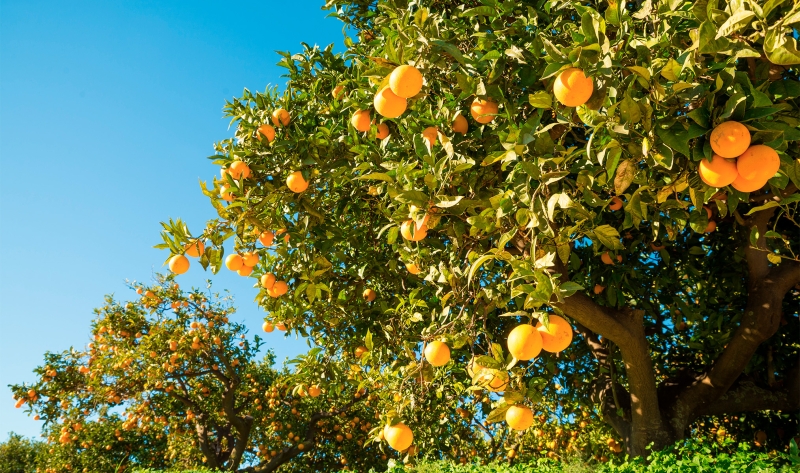
If the task is to visit all the sights, it is best to come in January (orange season). Photo: Olaf Speier/Shutterstock.com
Where else to relax in the south of Spain
Benidorm, Torrevieja, Cartagena and more — we have collected 9 Spanish resorts where you can spend a sooooong vacation at sea.
How to get there
The nearest airport to the city is Alicante-Elche. You can get from Moscow and St. Petersburg with a transfer in Yerevan or Istanbul and with intermediate connections in different European cities. Often in Rome, Lyon, as well as in Barcelona and Madrid. The average cost of a one-way ticket from Moscow will be 27,000 rubles, from St. Petersburg — 42,000 rubles.
Entry rules
A valid Schengen is required to travel to Spain. The advantage is that the Spaniards continue to issue tourist visas to Russians, the main thing is to follow all the formalities. Instructions for entry to Europe in 2025 are available in Oh! The blog.
Where to stay
There are almost 1,500 hotels and apartments in Alicante on the Island, and many of them can be booked with a discount on the GURU Island loyalty program.
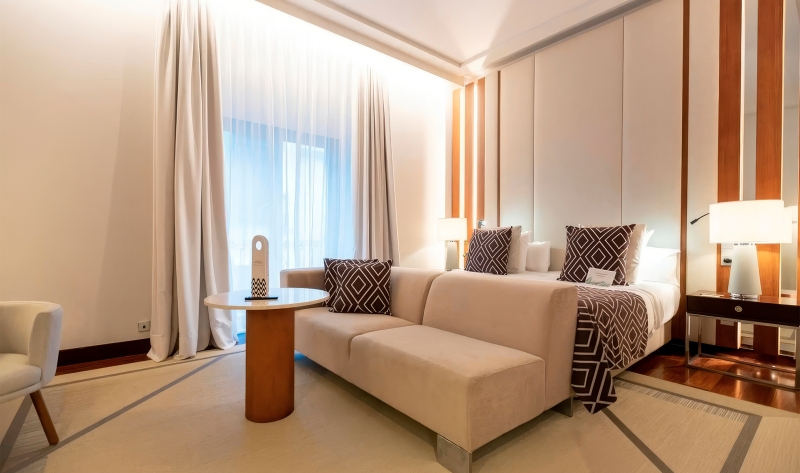
Hospes Amérigo.
Beaches
The beaches of Alicante (both the city itself and the entire province) are considered one of the best in Spain and the world and have a “Blue Flag”. The coastline of Alicante stretches for 23 km and includes more than 10 beaches. You can surf on almost all of them.
Here is a list of the top ones:
- 700-meter (and all-season) It will take place at the foot of the Santa Barbara Fortress;
- ideal for sports San Juan;
- Urbanova, one of the largest beaches on the Costa Blanca;
- family La Almadraba;
- secluded San Gabriel;
- Agua Amarga marked Dog Friendly;
- wilder, but picturesque coves off the rocky cape of Cabo de Huertas.

700-meter postage at the foot of the Santa Barbara Fortress. Photo: lunamarina/Shutterstock.com
Dog-friendly beaches
If you are going on vacation with a pet, it is useful to know: on the beaches of Alicante, dogs walk only from November 1 to March 1, but on Agua Amarga — always.
Tabarca
If the wild beaches near the city limits of Alicante are not enough, swim to Tabarca. The smallest inhabited island in the country is 22 km away by ferry from the Alicante pier (it’s no more than an hour on the way).
People come here for a relaxing holiday in quiet bays. Local restaurants are another point in favor of visiting the island: some traditional dishes are prepared only here. Snorkeling is a special area of tourism here, and the island’s waters are protected at the state level: fishing is not allowed nearby, and ships have parking restrictions.
Be sure to stay the night: they watch the stars on the beaches — it’s not for nothing that the island is included in the list of Starlight natural observatories (an organization founded with the support of UNESCO and the International Astronomical Union). In daylight, seaweed endemic to posidonia and rare underwater inhabitants can be seen on the seabed in the vicinity.
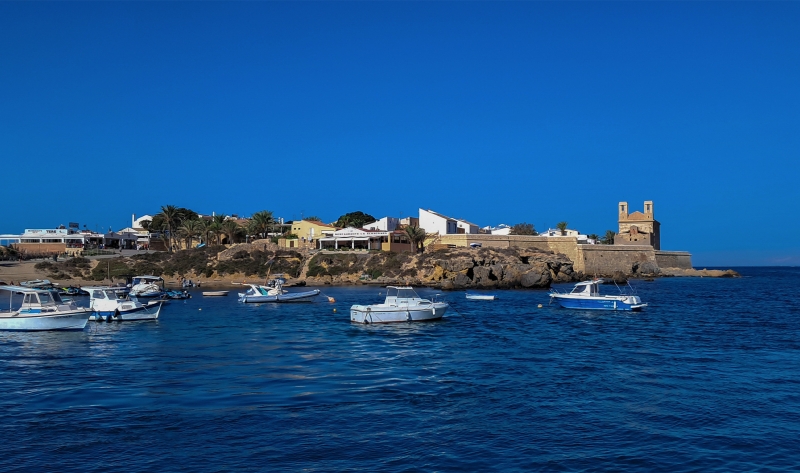
People come here for a relaxing holiday in quiet bays. Photo: Helen02.2022/Shutterstock.com
Attractions
Alicante was partially destroyed during the civil war, so now the urban landscape consists of a contrast of ancient streets and architectural layers of modernity.
Santa Barbara Fortress. Start your walk with the Old Town and the fortress, which is found on souvenir postcards from Alicante. The medieval castle stands on Mount Benacantil at an altitude of 166 m above sea level. It was founded in the 9th century during the Islamic period. You can get here on foot or by elevator, which is located opposite Postiguet Beach.
The Santa Cruz quarter. You’ll recognize it by its snow—white houses with colorful doors and wrought-iron balcony railings, marble staircases, and most importantly by the outdoor pots of flowers, palm trees, and exotic plants that have transformed the neighborhood into a photogenic greenhouse.
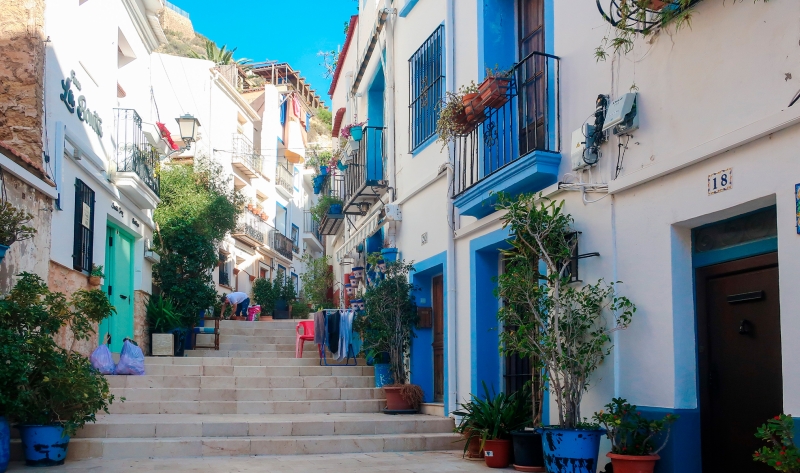
You’ll recognize it by its snow-white houses with colorful doors and wrought-iron balcony railings, and marble staircases. Photo: Monique64/Shutterstock.com
Cathedrals. Other highlights of the Old Town: St. Nicholas Cathedral with a blue dome,which was rebuilt in the Baroque Renaissance style on the site of a mosque, and the oldest functioning church of Alicante is the Gothic Basilica of St. Mary.
Esplanade. La Explanada de España Alley is a promenade along palm trees lined with a mosaic of 6.5 million miniature marble tiles. It flows smoothly into Canalejas Park with huge century—old ficus trees (for photo shoots, that’s the thing). On the other side of La Explanada de España is the Carbonel Mansion, an Art Nouveau textile magnate’s apartment building that has been here since 1924.
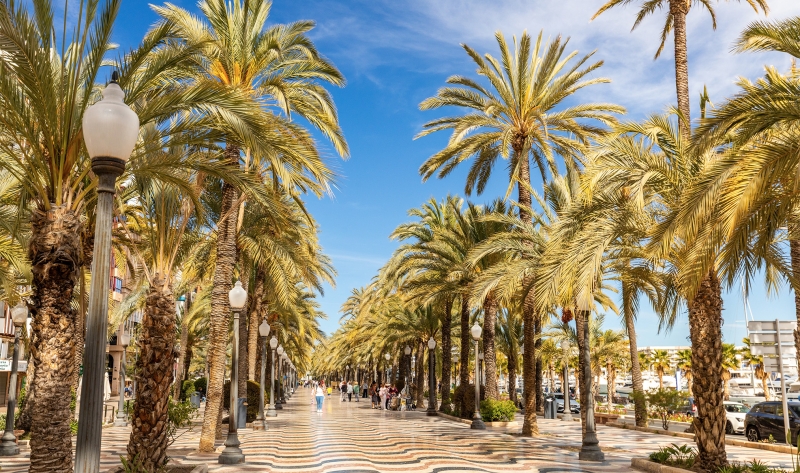
La Explanada de España Alley is a promenade along palm trees lined with a mosaic of 6.5 million miniature marble tiles. Photo: Andrzej Rostek/Shutterstock.com
The central square of Alicante.The famous fountain is located here, in the center of which is a stele in the Moorish—Baroque style, surrounded by female figures and four horses. Horses symbolize the seasons.
Mushroom Street. The landmark of the XXI century is La Calle de Las Setas with many restaurants, shops and… mushrooms with different faces and shapes.
The Alicante Museum of Modern Art, or MACA. The gallery contains originals by Joan Miro, Salvador Dali, Pablo Picasso.

The Museum of Modern Art of Alicante. Photo: Nina Alizada/Shutterstock.com
Archaeological Museum of MARQ. This building includes a library, a scientific foundation, a lecture hall, a learning space and several exhibitions.
Gravina Museum of Fine Arts MUBAG. It contains masterpieces of Spanish painting from the 16th to the 20th centuries.
Festivals
Carnival of Alicante.A landmark festival takes place in February and March (dates change every year), and the Old Town becomes the epicenter of an extravaganza with dancing, live music, DJ sets and large-scale parades.
A festival during Holy Week. In early April, before Easter, a historical reenactment of the battle of the Moors and Christians takes place in the city and the surrounding area. Medieval costumes recreated from historical archives, horse racing, jousting tournaments, folk music of the Spanish Middle Ages are an instant catapult into the past.
“Bonfires of St. John the Baptist”. Every June, the streets of Alicante literally breathe fire during one of Spain’s most vibrant festivals, Las Hogueras de San Juan (“Bonfires of St. John the Baptist”). Las Hogueras is celebrated for 10 days: artists and artists from all over the world, musicians, travelers, and locals are all euphoric.
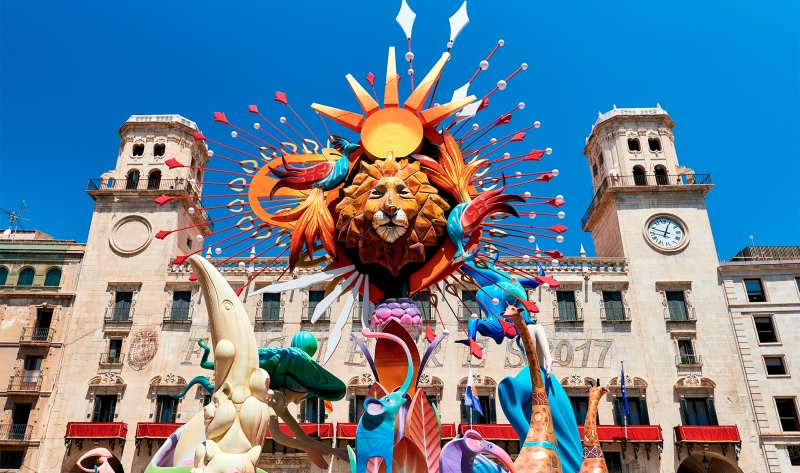
Las Hogueras celebrates 10 days: artists and artists from all over the world, musicians, travelers, locals — all in euphoria. Photo: Alex Tihonovs/Shutterstock.com
The medieval market. At the end of June, Mercado Medieval takes place with products from local artisans, juggling shows, live music and other fun that has been available to the townspeople for centuries.
FIJAZZ International Jazz Festival.It usually falls in the middle of July.
The Catholic Christmas market.From December 24 to December 25, Alicante hosts mass celebrations and a delicious fair where you can taste your favorite national sweets, including nut nougat — turron.
New Year’s Eve. On New Year’s Eve, Nochevieja from December 31 to January 1, they massively eat grapes and dance on the town hall square.

On New Year’s Eve, they massively eat grapes and dance on the town hall square. Photo: Sonia Bonet/Shutterstock.com
Food
The first rule: paella is for tourists! Locals eat (and expertly cook) other dishes.
Rice in Alicante (arroz alicantino). It is cooked in a frying pan in a rich broth, often with seafood, rabbit, snails, duck.
Crispy rice (arroz con costra). Served with a crust of beaten eggs.
Stew. If you like fish, choose the pericana cod stew with dried peppers and walnuts.

Crispy rice (arroz con costra). Photo: Fernando Sanchez Cortes/Shutterstock.com
Pickles (salazones). It’s like basturma or Parma ham, but from fish — there are anchovies and tuna.
Alicante gazpacho. It is also atypical: The soup is served hot, with paprika and finely chopped pasta.
Local pizza (coca de verduras). It is prepared on a thin dough with a vegetable filling.
Toast with chopped tomatoes (pan con tomat).My favorite breakfast in Alicante. It is often washed down with orchata, the region’s iconic drink made from rice, barley, sesame and almonds.
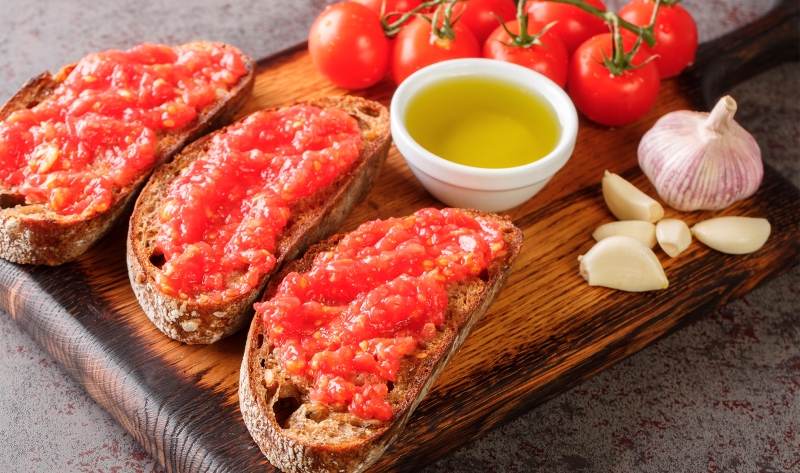
Toast with chopped tomatoes (pan con tomat). Photo: Sergii Koval/Shutterstock.com
Where to try
Go for authentic cuisine and its modern versions:
- to the Mercado Central Art Nouveau Central market,
- to the El Barrio area — between Postiguet Beach and Santa Barbara Fortress,
- to Virgen del Socorro Street,
- to the square near the Municipal Palace.
If you want to immerse yourself in high gastronomy, visit restaurants with Michelin stars.:
- Baeza & Rufete,
- LaFinca.
- Alba,
- Tabula Rasa,
- Brel,
- Frisone.
Dinner with panoramic views of the Costa Blanca, book on the 26th floor of the Gran Sol skyscraper Hotel — Convistas restaurant is located 90 m above the asphalt.
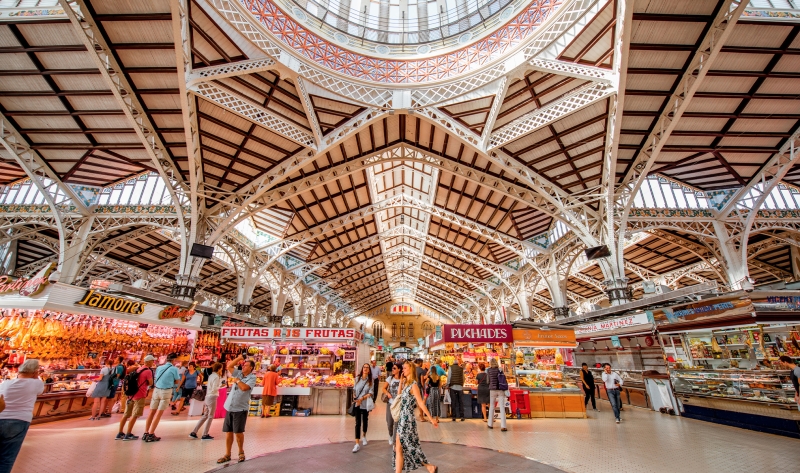
Mercado Central Art Nouveau Central Market. Photo: RossHelen/Shutterstock.com
Shopping
The main shopping street is Avenida Maisonave. There are many boutiques and a multi-storey department store of the famous Spanish chain El Corte Inglés.
For the record: as a fashionable souvenir, buy open sandals on a flat platform — abarkas. In addition to mothballs, there are plenty of designer versions from tourist shops in the city.
Kilometers of Spain’s best beaches, coves with rocky headlands, architectural eclecticism, authentic food, colorful festivals — it’s hard not to find something to like in Alicante. It is convenient to plan a vacation on the Costa Blanca with an Island – choose from 1,500 hotels and apartments, apply the GURU discount and pay with a card from any Russian bank.
Advertising. Hotel Booking LLC. Erid: 2VtzquxNyHP
Cover photo: Lukrecja/Shutterstock.com
